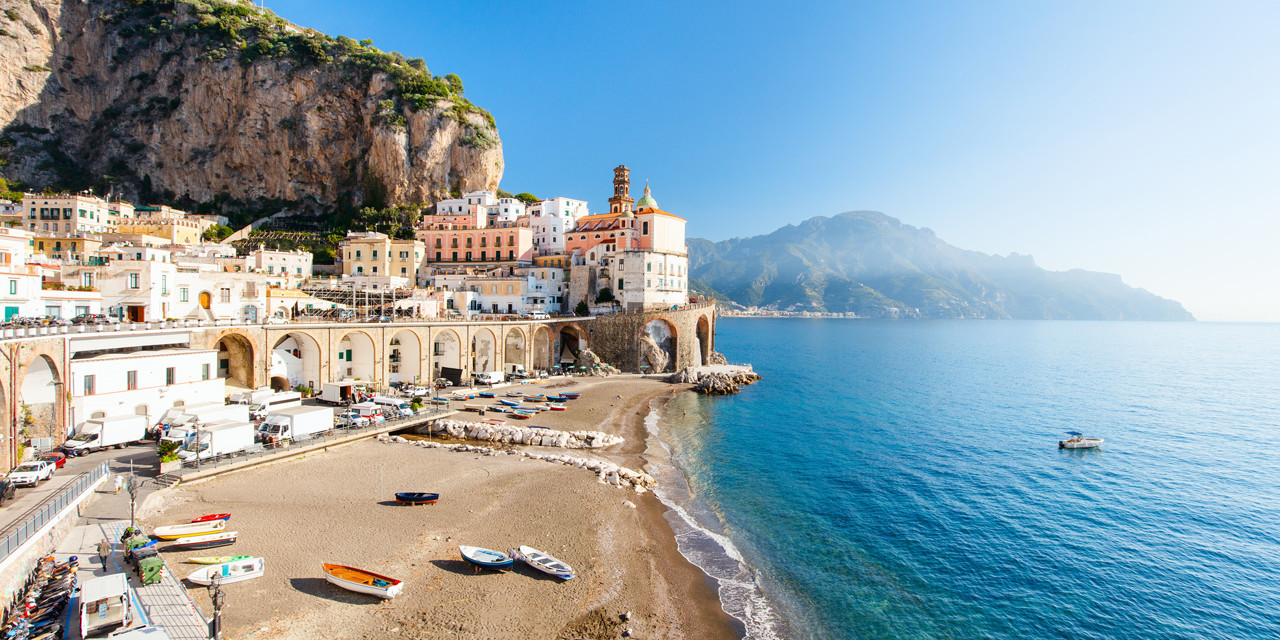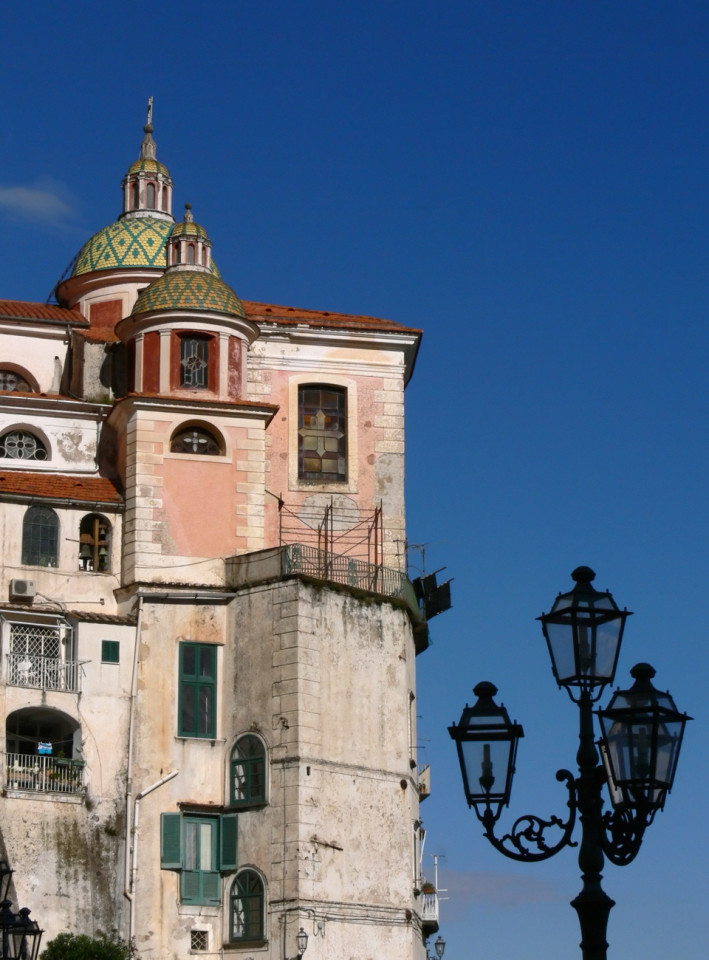
Atrani, the Hidden Gem of the Amalfi Coast
Atrani is the smallest municipality in Italy by surface area, yet it holds a vibrant and authentic heart.
Tucked between Mount Civita to the east and Mount Aureo to the west, the village stretches along the valley of the Dragone River — named after a local legend that tells of a fearsome fire-breathing dragon once hiding there. Embraced by cliffs and overlooking a crystal-clear sea,
Atrani preserves its medieval charm with whitewashed houses clinging to one another, narrow alleys, and stairways that climb toward the sky.
Here, time seems to stand still, far from the chaos of mass tourism.

What to see in Atrani: sacred art, legends, and seaside relaxation
Among the must-see experiences in Atrani is a visit to the Church of San Salvatore de’ Birecto, a historic site that once hosted the coronation of the Doges of Amalfi. Its interior holds precious works of art and deep expressions of local spirituality.
Also worth visiting are the Collegiate Church of Santa Maria Maddalena, with its scenic Baroque façade overlooking the sea, and the Church of Santa Maria del Bando, nestled in the rock and accessible by a short but charming staircase.
For those who enjoy panoramic walks, it’s worth climbing to the Grotta di Masaniello, linked to the legend of the Neapolitan revolutionary and offering breathtaking views.
Atrani is also perfect for relaxing on its small sandy and pebbled beach or enjoying a traditional dinner with a sea view, surrounded by the village’s authentic and peaceful atmosphere.
Authentic Flavors and Traditions of Atrani
Atrani also wins hearts at the table, with a simple and genuine cuisine that carries the scent of the sea and history.
One of its most curious specialties is sarchiapone, a traditional dish made of zucchini stuffed with meat, eggs, cheese, and spices, then cooked in tomato sauce — an ancient recipe symbolizing the village’s farming heritage.
Also not to be missed is the pasticciotto, a shortcrust pastry filled with cream, perfect for a sweet break between walks.
In the local family-run restaurants, you can enjoy fresh seafood dishes like scialatielli with shellfish or grilled bluefish, paired with a good glass of Campanian wine.
As you stroll through the narrow streets, your eyes are often drawn to the votive shrines — small niches set into the walls of houses, where candles, flowers, and sacred images express the silent devotion of the locals.
These religious symbols, often dedicated to the Madonna, give the village an intimate and deeply spiritual atmosphere.
Atrani is a place to be experienced slowly, where every corner reveals a fragment of history and faith.
How to get to Atrani
Atrani is easily accessible by bus and car, but during the tourist season, several ferries make direct stops at its small port, making sea travel the best option to reach this charming coastal village.
Here are all the details:
- By ferry: Ferries depart from Salerno and stop in Amalfi before continuing directly to Atrani. Alternatively, Atrani can also be reached from Positano, Minori, Maiori, and other ports with frequent and scenic routes.
- By bus: Local lines travel along the SS163 Amalfitana, stopping near the historic center.
- By car: You can reach Atrani via the SS163 Amalfitana road, but parking in the village is very limited. It is recommended to park in Amalfi or nearby areas.
Book now your next trip!
Ready to visit Atrani?
Check real-time availability and book online your ferry to Atrani with Coastrider!








